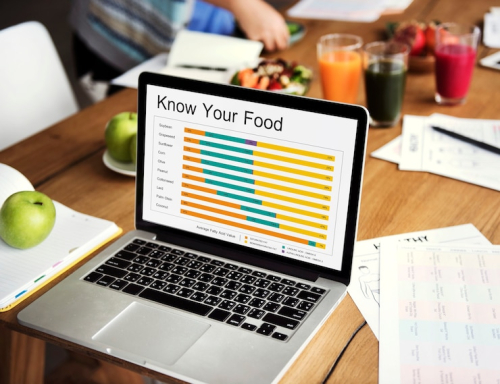Quick Listen:
In a lively Philadelphia sushi bar, a robotic server glides through the crowd, balancing a tray of sodas with mechanical precision. My daughters laugh, grabbing their drinks as Kura Sushi’s Kur-B the KuraBot spins away silently. This isn’t a novelty it’s a window into the future of dining, where technology not only delivers food but transforms the menu itself. At Kura, touchscreens, conveyor belts, and automated billing streamline operations, showcasing the power of menu optimization a strategy revolutionizing modern restaurants.
Menu optimization goes beyond listing dishes; it leverages data to design menus that maximize profits, enhance service speed, and ensure customer loyalty. In today’s digital era, restaurants are adopting advanced tools like AI, analytics, and software to make informed decisions. The global restaurant digitalization market is set to grow from $7.9 billion in 2023 to $37.0 billion by 2033, with a robust 16.7% annual growth rate. This surge reflects the integration of digital POS systems, AI analytics, and customer relationship platforms, all aimed at refining the dining experience. Here’s how data-driven menu optimization is reshaping the industry and delivering measurable results.
The Evolution of Menu Design: From Instinct to Algorithms
The era of chefs crafting menus based on intuition is over. Modern menus are meticulously engineered using cutting-edge technology. Advanced POS systems like Toast and Square do more than process payments they analyze every order, identifying top sellers and underperformers. Heatmap analytics reveal where customer’s eyes linger, enabling restaurants to spotlight high-margin items. Some operators are exploring dynamic pricing, adjusting costs based on demand, or “dayparting” tailoring menus for breakfast, lunch, or dinner to align with customer preferences.
Artificial intelligence is a game-changer. AI-driven tools offer personalized recommendations, such as pairing a burger with a bold cabernet or suggesting a watermelon-cucumber salad for health-conscious diners. Predictive analytics optimize inventory, minimizing waste by forecasting demand. These technologies, part of a broader digital shift, help restaurants meet consumer demands for efficiency while reducing costs. As the Market.us report highlights, digitalization enhances customer experience and profitability by streamlining operations from online reservations to kitchen management.
Case Studies: Data-Driven Success in Action
Real-world examples illustrate the impact of menu optimization. A fast-casual chain used POS analytics to streamline its menu, eliminating low-performing dishes. This reduced kitchen complexity and improved customer satisfaction through faster service. In fine dining, restaurants have employed strategic pricing techniques, such as placing a premium dish alongside mid-range options to make them appear more affordable, encouraging diners to choose profitable items.
A national chain leveraged digital menus for A/B testing, refining item descriptions and layouts on their app to boost sales of complementary items. Meanwhile, chains like Starbucks and Chili’s are trimming menus to focus on high-quality, high-profit dishes, proving that a leaner menu can drive revenue. These examples show how data transforms menus into powerful revenue-generating tools.
Navigating Challenges: Avoiding Optimization Pitfalls
Menu optimization isn’t without risks. Relying on instinct rather than data can lead to costly missteps chefs may champion a dish that fails to sell, clogging kitchen operations. Disconnected tech systems, where POS doesn’t integrate with inventory or marketing tools, create inefficiencies. For instance, promoting a special without sufficient ingredients can halt service. Abrupt menu changes also risk alienating loyal customers if beloved items disappear without warning.
Sujan Sarkar, chef and co-owner of Chicago’s Michelin-starred Indienne, faced these challenges head-on. Opening in 2022 during pandemic-related closures, he took a bold risk with a high-end Indian tasting menu. By using data to refine offerings while maintaining consistency, he built a thriving business. “It can be profitable,” Sarkar told Business Insider, emphasizing the importance of balancing data-driven decisions with a human touch to retain customer loyalty.
The Rewards: Efficiency, Profitability, and Satisfied Customers
Effective menu optimization delivers tangible benefits. Average ticket sizes increase as customers choose high-margin items or add-ons like sides and drinks, driven by strategic menu design. Predictive analytics reduce food waste by aligning inventory with demand, lowering costs. Streamlined menus accelerate prep and service, easing staff workloads. Personalization, such as vegan or gluten-free filters, enhances customer satisfaction, as noted in Mastercard’s insights on maximizing consumer preferences.
Promotions also benefit. Digital platforms enable seamless cross-selling, suggesting appetizers or desserts at checkout, boosting revenue while making customers feel valued. The result is a win-win: higher profits, lower operational costs, and a dining experience tailored to individual needs.
The Future: Menus Powered by Intelligence
The horizon of menu optimization is brimming with potential. Machine learning is poised to elevate menu engineering, predicting trends before they surface. Voice AI, already in use at drive-thrus, could soon enable real-time menu adjustments based on a customer’s order history or even their tone. Digital menu boards, capable of instant updates, allow restaurants to test promotions dynamically, ensuring agility in a competitive market.
For restaurant operators, the path forward is clear: start with small, data-driven steps. Use POS insights to identify underperforming items, test incremental changes, and ensure marketing aligns with kitchen capacity. As industry experts note, menu data is no longer just a report it’s a strategic roadmap to profitability. With the right technology, restaurants can stay ahead of trends and deliver exceptional value.
A Blueprint for Success
Menus are no longer static lists they’re dynamic, data-driven tools that drive the future of dining. From robotic servers like Kur-B to AI-powered analytics, restaurants are redefining how they operate. The rewards are undeniable: increased profits, streamlined operations, and customers who leave delighted. For operators, the call to action is simple: harness the power of data, optimize your menu, and embrace the digital tools shaping the industry. The next breakthrough is just a data point away.
Key Takeaway: The restaurant digitalization market is projected to reach $37.0 billion by 2033, driven by tools like AI, POS systems, and analytics. By optimizing menus with data, restaurants can boost profits, reduce waste, and enhance customer satisfaction.
Disclaimer: The above helpful resources content contains personal opinions and experiences. The information provided is for general knowledge and does not constitute professional advice.
You may also be interested in: Restaurant Customer Retention: The Startling 70% Dropoff
Scattered systems and manual processes erode your restaurant’s margins daily. Milagro unifies POS, digital menus, online ordering, staffing, loyalty, and AI-powered marketing into one platform, slashing costs and enhancing guest loyalty. Reclaim control over operations and drive revenue growth. Streamline your workflow and elevate profitability. Schedule your Milagro demo today!
Powered by flareAI.






